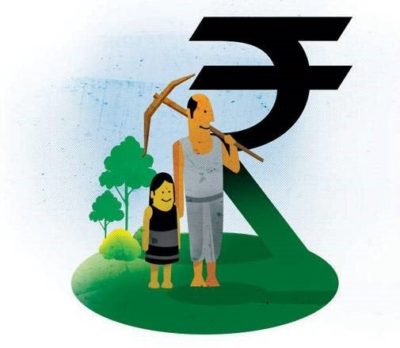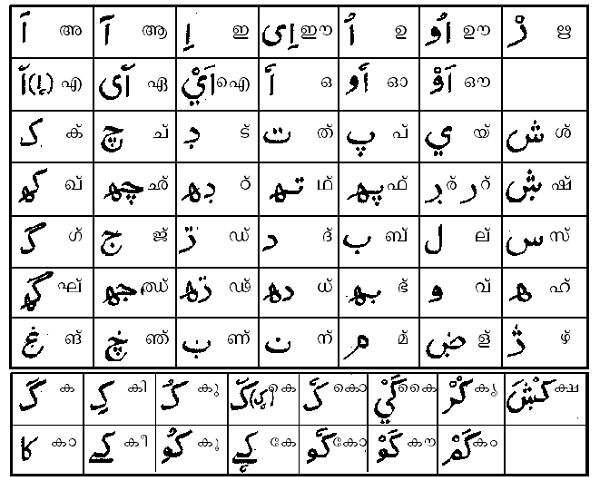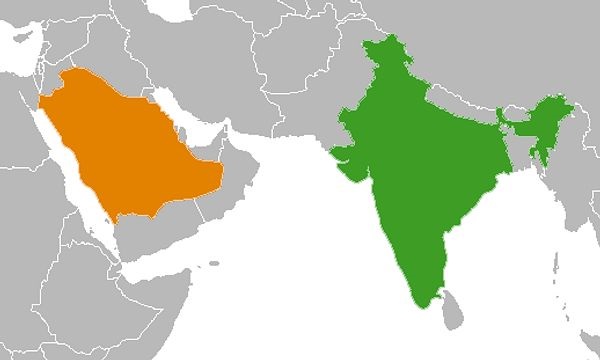
The modern-day world has rapidly grown beyond the imagination of man. Before fifty years we never could have even dreamt of video calling through a wireless device or about building modern day engineering marvels. Great advancements in the field of finance and banking have also led to the development of large-scale wealth related industries like UBS, Merrill lynch and Morgan Stanley. Banking facilities are now highly advanced and more customer friendly. Today a person can access his or her account using a particular application through wireless device irrespective of the location that he or she is currently at. We can deposit, transfer or withdraw funds without physically approaching the bank thanks to technology-based banking activities.
In spite of all these improvements in finance and banking, a huge percentage of the global population still does not even possess a bank account. Actually more the half of the world’s working population don’t have access to reasonable, affordable or quality banking services, which is about 2.5 billion adults – 2.2 billion combining Africa, Asia, Latin America and Middle East countries (McKinsey 2010).
In the case of India, the conditions are not very different, 69% of the population lives in rural areas and because of this many of them are unaware and are illiterate of the services provided by banks. This affects their saving habits and borrowing options.
In order to make sure that every individual in the country can avail the services provided by banks and where a common farmer of weaker sections of the population accesses the products and services like deposit accounts, payment facilities, micro-credit, low-level insurance scheme’s etcetera, this is called Financial Inclusion.
Financial inclusion is ensuring the Availability and accessibility of financial services to low income and disadvantaged sections of society at an affordable cost. The coverage of financial services includes credit, savings, insurance and remittance facilities. Financial inclusion aims to provide services at transparent and equitable manner by major institutional players.
Primarily financial inclusion aims to help the under deprived community to address their needs through a formal system. This will help them achieve stability in earnings and it could help them avoid high-interest demanding moneylenders operating in the unorganized sector.
The government of India and RBI are making continuous efforts for financial inclusion as an important step in achieving inclusive growth. Financial inclusion was one of the major priorities of RBI since the framing of Financial Inclusion policy in 2005. The practice of inclusive growth started long before the introduction of the term financial inclusion to bring rural population to formal financial sector ,efforts were made to strengthening the banking system in last five decades such as Nationalisation of banks, building more branches for scheduled banks, cooperatives and Regional Rural banks, Nabard, Self Help groups etc.
Major initiatives under financial inclusion policy are:
• Introduction of no-frills account
• Simplification of KYC norms
• Introduction of General credit cards
• Easy credit facilities
• Kisan Credit cards
• One time settlement
• Financial Education
The common man could contribute his earnings to crowdfunding scheme’s which rural banks promote like chit-funds have lowest interest rates thereby improving his investment habits. These activities will make them more aware of the facilities which they could make use of. Involving in financial practices will help develop a saving habit naturally. Now these practices combined will provide an opportunity to make an improvement at an individual level than at the community level which then will contribute to uplifted living standards of the entire rural population.
As a collective term and as a tool, financial inclusion provides great leverage to reduce poverty and financial inequality. This, in turn, contributes to economic development by equalizing opportunities, alleviate inequalities and helping the country utilize its human resources much effectively. This study” FINANCIAL INCLUSION IN RURAL AREA OF KERALA STATE
(with special reference to Karuvarakundu panchayat malappuram district)” as whole aims to understand the basic financial needs of the common man and whether the banks are able to achieve full financial inclusion among rural population because it is quite evident that most of the unidentified productive areas lie among the rural parts and thus the needs of people living in these parts have to be identified .If their needs are met it is sure that gradually national productivity sees an incline in growth.
1.1. STATEMENT OF THE PROBLEM
Banks Play a major role in financial inclusion by mobilizing funds and providing guidelines to people for managing their fund .Various policies and programmes were established by banks to include people under the canopy of financial inclusion especially in rural areas but still, most of the rural people depend on unorganised sector financial needs. So the study intends to answer what are the difficulties faced by people Karuvarakundu panchayat in accessing banking services? Why people still depend on the unorganised sector? Why are the people in Karuvarakundu panchayat unable to get full benefits of banking services.
1.2. OBJECTIVES OF THE STUDY
• To inquire whether the rural population is capable to deal with the banking services.
• To understand the level of awareness of banking service among rural people of Karuvarakundu panchayat
• To examine the level of satisfaction regards to the services received from banking companies
• To provide suggestions and recommendations based on the study.
1.3.SCOPE OF THE STUDY
The present study is related to Financial Inclusion Practises of the rural population. The study is limited to karuvarakundu Panchayat at Malappuram district, Kerala. The banking behavior of 100 random residents of Karuvarakundu panchayat was analyzed for understanding their financial inclusion practices. Banking habits and awareness is the only financial practice come under the purview of the study.
1.4.RESEARCH METHODOLOGY
Sampling design
Simple random sampling was used for the purpose of drawing sample from the population
Sample size.
The Residents of Karuvarakundu panchayat is taken for the study and a total of 100 residents were taken as a sample.
Sources of data
Primary data was collected from the residents of Karuvarakundu panchayat.
Secondary data were collected from earlier work, journals, websites, and magazines. Method of data collection
Data were collected in two ways that are primary data and secondary data. The data collection method used for collection of primary data was through a structured questionnaire. The secondary data was collected through books, journals, websites, and magazines.
Tools for Analysis and interpretation
Simple percentage Analysis and graphs were used for Analysis and interpretation
2. REVIEW OF LITERATURE
B.K swain (2009) had studied the status of financial inclusion of Srikakulam district Andhra Pradesh .To complete the study researcher used a questionnaire to collect data on banking habit of people .The Result shows that there is lack of financial inclusion practices in the study area.
Ram A. Cnaan, (2012) investigated the coverage of financial inclusion in rural south India by selecting four villages in the state of Kerala, Karnataka, Tamilnadu and Andhra Pradesh through a structured questionnaire. The researcher conducted household surveys to study the coverage and barriers to financial inclusion in the villages selected.
The study concluded that there is still an ambiguity regarding the financial inclusion of low financial literacy. The Microfinance and self Help groups located in the area failed to prove its association with financial inclusion practices and eliminating the barriers.
Dr. Christabell. P. J, (2012) conducted a study on the role of microfinance as a tool for financial inclusion. To undergone the study researcher used data from secondary sources like Government sources, RBI, World Bank, NABARD, SLBC, CGAP, to analyze the activities of Grammen bank, cooperative banks, and Self-help groups .He observed that lack of proper management and control on these sectors are affecting their proper functioning and the presence of excessive government restrictions and high-interest rate can challenge their future growth.
Munmun Ghosh ( 2013) conducted a study trying to understand inclusive growth phenomenon and extent of financial inclusion. The research has been done using secondary database source, considering parameters like GDP per capita, literacy rate, unemployment rate and index of financial inclusion. The study found out that financial inclusion levels varied from state to state and financial literacy and level of awareness continue to remain an issue with regard to usage of financial services and products.
Dr .Anupama Sharma (March 2013) did research on the relevance of financial inclusion for developing nations used secondary data books, magazines, newspapers, research articles, research journal, E-journals, RBI reports, report of NABARD. The research found out that even today half of the population of the nation doesn’t have access to formal financial services and are largely dependent on money lenders and the mere opening of no-frills bank accounts won’t reduce financial exclusion within the poor communities and need of sincere approach from Financial Institutions towards financial inclusion.
Shabana mol TP (2014) conducted a study to assess the extent of financial inclusion among rural households in Kerala by examining their savings and credit behavior through Primary data gathered through interviews conducted among various rural households in Malappuram district, Kerala.
The study revealed the majority of respondents in the district are included in the formal financial system of banking by having a bank account but face low credit facilities because their failure to meets the norms and conditions of the bank such as guarantee, collateral etc.
Ajanta Phatowali (2015) based primary data through a survey to study the financial inclusion among the urban population of Assam covering five urban banking centers of Assam by inquiring experience, expectation, availability, perception usage of banking services and as well as usage of nonbanking services. The study indicated the banking system has not been inclusive and perceptions about banks treatment to it different customers limit people for being financially included.
Gomathy M (2015) used secondary data from various institutions like Government sources, RBI, World Bank, NABARD, SLBC to evaluate the role of financial institutions in improving financial inclusion of rural population by examining the various
financial service initiatives made by banks and other financial institutions. She suggested the need for strengthening the banking and financial institutions by building awareness and making people financially literate because, after all the efforts and services made available, the majority still remain unbanked.
Preeti salathia (2016) Studied financial inclusion on economic development by collecting details from beneficiaries of financial inclusion from banks and through questionnaire from beneficiaries of five villages in Jammu &kashmir naming jammu, Samba, Kathua, Reasi and Udhampur by investigating the access, availability, and usage of banking services among people.
The study suggested that still there is a need in improving and bringing more banking facilities through proper implementation of government programmes.
Ankita Birla (2016) had an analytical study on the role of commercial banks in financial inclusion in the context of Indian economy. The study was based on secondary sources such as newspapers, Research articles, journals, World Bank publications, government publication s etc by examining the initiatives and efforts taken by the central bank, government and commercial banks for financial inclusion.
The study concluded that commercial banks play a significant role in financial inclusion but the various schemes by banks and government only made a mixed impact on Indian economy due to the poor performance of most of them.
Dr.Titto Varghese (2017) studied financial inclusion drive at Malappuram district, Kerala. The effectiveness of financial inclusion was evaluated by observing and analyzing banking behavior of women MNREGA beneficiaries in Malappuram district (Kerala) through a structured questionnaire. The researcher stated that women hold bank account but unaware of the benefits and services provided due to lack of sincere efforts from bank officials to educate them, thus unable to make use of financial inclusion advantage.
3. THEORICAL FRAMEWORK
3.1. FINANCIAL INCLUSION\
3.1.1. Definitions
“Financial inclusion can be defined as the process of ensuring access to financial services and timely and adequate credit where needed by the vulnerable groups such as weaker sections of the society and low income groups at an affordable cost.”
(Dr .C. Rangarajan)
“Financial inclusion, broadly defined, refers to universal access to a wide range of financial services at a reasonable cost which could be accessed by the lower income communities living in remote areas. These include not only banking products but also other financial services such as insurance and equity products.”
(Dr .Raghuram G .Rajan)
Above explanations about financial inclusion talks about a condition in which the people or communities living below the poverty line of India getting fair facilities in the sector of banking and insurance to improve their standards of livelihood at acceptable costs.
Financial inclusion broadens the resources base of the financial system by creating a habit of savings among large category of the rural population and set its own landmark in the activity of economic prosperity. By including the lower income communities within the reach of formal banking; financial inclusion ensures safety for their financial wealth and other resources in desperate times. Financial inclusion also helps to avoid exploitation of vulnerable sections by the high interest demanding money lenders in the un-organised sector by providing easy access to formal credit
The reserve bank and the government of India have been committed themselves in making targeted efforts to include financial inclusion as the major national objective of the country. Some important steps made in the past decades involved, nationalization of banks, developing of active branch system of rural commercial banks, co-operative societies, and deployment of mandated target oriented lending groups, formation of self-help groups and zero balance BSBD accounts. The basic aim of all these initiatives is to reach out to large sections of financially left out population of India.
3.1.2.Financial Exclusion;
It was in 1999, that the term financial exclusion first emerged and known to have been in use in a broader sense to relate to mainstream financial services, “A person is considered financially excluded when he/she has either no access to some or all services offered by mainstream of financial institutions in hi/her country or does not make use of these services” quoted by Kempton whyley,
1999.
Financial exclusion is major concern when it comes to development of the low-income households as well as businesses, largely experienced in semi-urban and rural areas.
“financial exclusion is the lack of access by certain consumers to appropriate, low cost, fair price and safe financial products and services from mainstream providers” quoted by
K. C. Chakra borty.
3.2. TYPES OF FINANCIAL EXCLUSION
• Sections of population which does not access to formal financial system.
• Communities which has limited access to banks and other financial services.
• Sections of population which has no appropriate products to choose from.
Now there are a variety of reasons behind the condition of financial exclusion in India;
1. Lack of banking facilities in rural points of India
2. Financial illiteracy
3. Non-customer friendly staff
4. Complex and lengthy documentation process
5. Out dated products and services
6. Language barrier
7. Reluctance from weaker section of population to approach a bank
8. Low income standards
Extent of Financial exclusion in India
• Almost half of the country in unbanked.
• Only about 55% of the population have deposit accounts and 9% have credit accounts with formal banking institutions.
• India is the top most financially excluded nation having 145 million households.
• There was only one bank for 14000 people.
• There are around 6 lakh villages in India, rural networks of SCBs including RRBs number 33,495.
• Only a 20% of the total population has any kind of insurance and 9.6% of the population has non-life insurance coverage.
Now financial exclusion is the condition or rate of people or community who are unable to access financial resources such as banking and insurance at an affordable cost.
According to the NSSO 59th survey results about 51.4% of farmers in India are financially excluded from both formal and in-formal sources of finance. Of the total number of farmer households, only 27% has access to formal sources of credit and third of
this group has also borrowed from non-financial sources and as an overall 73% of farmers in
India have no access to formal credit.
While considering the regional disparities the condition really worsens, financial inclusion is more acute in central, Eastern and north-eastern regions. All the three regions together accounted for 64% of all financially excluded farmer households in the country.
Despite 70 years of independence, India is still lagging behind in the process of providing financial facilities to its common people with nearly half of the households left unbanked and nearly 90% villages not having bank branches. Much concern is that, people in these unbanked areas do not fully understand or appreciate why they need a bank account at all, or why credits from the organised sector are much more useful than the informal sector. The plus-point of a financially inclusive model is many-fold. The government and the reserve
bank of India have been trying to focus on the issue since mid1950’s and they have re- engineered their approach from 2005 but the processes and its outcomes are rather slow in nature due to lack of a strong network, and financial instruments not suited to rural residents. Lack of awareness and financial literacy among rural population are primary reasons for low penetration of financial services.
The factors responsible for this condition can be looked up from both supply and demand side and the major reason for low penetration of financial services is because of shortage of supply of banking products and services. The reasons for demand for such products are because of low income level of the people living in rural places of India and financial illiteracy.
3.3. WHY FINANCIAL INCLUSION
• Financial development in India could only be achieved through development of common folk and their living environment and to reaching out to them is only possible through organising their informal financial setup.
• The goal of financial inclusion is include the economically backward classes of communities into a formal financial setup to improve their saving habits and to alleviate the high interest demanding loan sharks.
• Financial inclusion helps to bring in excluded groups not matter how low is their earning capacity or how complex is their day to day needs of finance.
• Financial inclusion aides in uniform and even development in the economic growth of the nation reaching out various groups of people engaged in a variety of economic activities.
• Maintaining a 9% growth rate on regular basis requires a the gathering of large section of under-banked population into the formal financial system. Financial inclusion is pre requisite for “inclusive growth”
Services Extended Through Financial Inclusion
1. Service Facility
2. Overdraft Facility
3. Payment and Remittance Services
4. Low cost financial services
5. Cheque facility
6. All kinds of commercial loan
7. Electronic fund transfer
8. Credit and debit card facility
9. Advice regarding finance and investment
10. Insurance products
3.4. MAJOR GOVERNMENT INITIATIVES FOR FINANCIAL INCLUSION
• Nationalization of Commercial Banks;
Banks are the key pillars of India’s financial system. Public have great faith in these institutions. Banks also have considerable amount good will in the rural areas. There are over 32600 branches in rural india and around 14400 semi-urban branches. 196 exclusive regional rural banks in deep hinterland are present. Rural and semi- urban bank accounts constitute close to around 60% in terms of bank accounts. The government have taken precautions and have made such decision to accommodate financial inclusion growth.
• SHG-Bank Linkage programs;
• The self-help group model is derived from the co-operative society model which involve an intensive movement to support poor self-supporting groups to sustain their economic activities. The self-help groups have come to play an important role in the process of financial inclusion. The self-help groups are given loans against the group members guarantee.
• Availability of Basic No Frill Accounts;
The availability no frill accounts has brought the costs owning or maintain an account in the formal banking sector. This has encouraged many common people to try new banking facilities made open to them by the government. RBI lists that more than 103 million no frill bank accounts were opened till march 2012.
• Simplification of Know Your Customer (KYC) Norms;
In the earlier times KYC norms were complex and the illiterate group of the nation could never approach a formal banking institution because this hindrance of transparency. This nature of complexity has been now removed from common norms for maintaining a savings
account. This has motivated many reluctant groups of people to change to formal financial organisations established in the localities.
• Kissan Credit Card;
This is credit card provided to the farmers of India so that could avail affordable credit. It was an initiation on behalf of the government of India and national bank for agricultural and rural development. The kiss an card allows to have cash credit facilities without going through time consuming bank credit screening processes repeatedly.
• State Level Banking Committee;
This state level banking network aims to reach out to the various states and its districts. This type of system is established among the states to ensure that every single person who intends to have a bank account must not get avoided by major branches of nationalized banks because of over-crowding. This type of network will help the staff also to identify its customers to focus on meeting their demands at the grass root level.
• Micro Finance Institutions;
Micro finance is now a new name for cost effective and sustainable way of taking the banking network to the rural parts of the nation. The wider principle behind microfinance initiatives is to-
1. Focus on poor masses
2. Generate effective substitutes
3. Emphasize on macro-economic growth
• Insurance Services;
In the case of India a major proportion of the population does not have access to formal insurance products.Micro-insurance services in number of countries have begun to expand only in recent times. The insurance regulatory and development board of India established rural and social sector targets for insurance companies. The insurance agencies also ensure a fair amount of shock absorption in times of desperate needs and they have put in their efforts to make the common folk understand the need for a formal insurance policy and the benefit which come afterwards.
• Financial Literacy;
Financial literacy is instrument or tool in spreading financial inclusion. Viewed from this point of condition. Financial education primarily relates to personal financial education to prepare individuals to take appropriate actions to improve over all well-being and avoid distress at the time of financial uncertainty.
Other Government Initiatives to accelerate Financial Inclusion
• Self-help-groups through NABARD.
• Woman’s self-help-groups through financial inclusion fund (FIF) and financial inclusion technology fund (FITF).
• Swarna JanyantiSwarozgarYojana - providing capacity building training and linking groups to banks.
• National Rural Livelihood Mission – a poverty alleviation program being implemented in Andhra Pradesh.
It can be said that India is at moderate level of financial inclusion as compared to other countries on different grounds. Different studies examined that there is close relation between financial inclusion and development. But because of the constraints like financial illiteracy, poverty, the inclusive growth is not possible. Inclusive development is only achievable through proper mechanism which channelizes all the resources from up to down.
Literacy is a prerequisite for creating investment awareness; hence it seems to be a key tool. There is chance for improvement in the rural areas if the authorities try to engage certain changes like no-frill accounts use of regional languages, advanced technologies, synergistic partnerships with technology service providers, simple KYC norms, and introduction of new saving schemes particularly for weaker sections of the community.
In order to achieve the goal of total financial inclusion, policy makers, banks, MFIs, NGOs and regulators have to work together. The results derived from the studies should be of help to policymakers and bankers as they consider innovative approaches to improve the participation of excluded populations in formal finance.
Studies on financial inclusion have tackled the issue from a variety of vantage points, with the exception of conceptual reviews; the aim is seemingly on finding out the relationship between financial inclusion with awareness, digital technology and constraints to access. At the present condition, technology is found to be a determining factor in the ultimate performance of financial inclusion policy, regardless of the context or the participants of the research with relation to this topic. Financial inclusion is the only hope for development of living standards of the lower income groups of the nation. This in turn will result in the development of the economy.
An apparent incline in addressing the population of financial exclusion requires a holistic approach for the banks to include their efforts to improve the awareness on financial system, corresponding financial advice and affordable system of credit to ignite the whole importance of formal financial system management for which banks need to enact strategies for reach in a cost effective manner.
Banks should give wide publicity to the facility of no frill accounts. Technology can be a very important tool in providing access to banking products in remote areas.
4. FINDINGS
1. Majority of respondents hold bank account in the locality. Only 4% of respondents do not have bank account because of low income and less awareness.
2. Most people hold savings account (62%) shows the interest to save; awareness of zero balance account is also promising .The fixed account holders are only 2%, those hold income above 300000.
3. The reason for opening account by the villagers is mostly to save and getting benefits like gas subsidies, MNREGA income from government. Very few people opened accounts for credit facility show the dependence of villagers on moneylenders and other unorganised sector for credit.
4. The respondents are assisted by Friends and Relatives for opening an account. The bank employees and self help organisations in the village assisted majority of respondents for opening a bank account.
5. Most of respondents visited the bank branches occasionally or half yearly which very low on the part of financial inclusion
6. Extent of financial inclusion- Awareness
• Internet banking: The respondents are poorly aware of internet banking services, because of low level computer knowledge and facilities
• Mobile banking: The respondents have low level awareness of mobile banking facilities. They don’t trust mobile banking as tool for transactions.
• Tele banking: people in Karuvarakundu panchayat show very low awareness in Tele banking as they have in mobile banking.
• E-commerce awareness in Karuvarakundu panchayat is low because of lack of computer knowledge and internet facilities
• Credit card: The respondents show a low awareness about credit card, because they prefer cash transactions more than credit transactions and their low income.
• Cheque book: people in Karuvarakundu panchayat expressed a strong knowledge about cheque book facilities.
• Loan facilities: All the respondents perceive high awareness about loan facilities.
• Deposit and withdrawal: All the respondents are aware of deposit and withdrawal facilities.
• Mortgages: Majority of the sample are aware about the mortgage facilities provided by banks.
• Locker facilities: All the respondents are aware about it.
• Overdraft: Awareness is very low. Most people do not know the exact meaning of overdraft.
• Debit card: Results show that respondents are well aware of Debit card services
The rural people are not aware of the recent developments in banking services, other than debit card and it shows that banks did not take any sincere efforts to give awareness about services provided by bank.
Availability and usage
• The usage of internet banking, mobile banking, telebanking, e-commerce is considerably low as the awareness indicates. The lack of computer knowledge and less trust on online banking makes people reluctant to use these services.
• No one among the respondents used credit card because of their preference towards cash and low credit worthiness.
• Majority of the population are able to avail loan and mortgage facilities from the bank.
• 90% of population never used overdraft and does not know what it means.
• The respondents are able to use cheque facilities, debit card facilities, deposit and withdrawal facilities. Even if all people are aware about locker facilities, users are low because of locker rent.
The result show that people in Karuvarakundu panchayat still prefer cash economy and The people in the area are not able to access and use financial services provided by banks.
7. Majority (77%) of the respondents received loan when they needed from banks. This is a sign that people depending on organised sources for credit needs and movement towards financial inclusion.
8. The banks rejected loan proposal of people who lacks repayment capacity and collateral facilities. This shows that people and low income people are still exposed to risk of money lenders.
9. The respondents in Karuvarakundu panchayat are satisfied about the behaviour of bank employees, distance of banks, timings of the bank, and facilities at counter .This shows the people are satisfied in banking infrastructure and employee behaviour
The respondents are dissatisfied about the quality of services provided by banks, they feels that banking procedures are complex and tiresome and the interest on loan and bank charges are high and unaffordable. Banks failed in reduction of KYC norms and making services affordable to rural poor.
10. The respondents perceive that their income high or low have a significant role in accessing banking services
11. Employment of respondents is a deciding factor in accessing financial services
12. Respondents perceive that their level of education is a major determinant in accessing financial services.
13. Most of the respondents faced difficulties during transactions .The complexity in documentation, delay in processing are faced by most respondents.
14. The barrier of language and technology caused villagers to face difficulties in transactions because the transaction forms and documents were not in regional language and 24% of respondents do not know how to use debit card.
Suggestions
Suggestions to improve the financial inclusion practises and to reduce the difficulties faced while availing banking services are:
• Banks should make effort to bring awareness about banking services among rural people.
• Bank should try to maintain same standard of service to all customers irrespective of education level and income
• Regional language should be used for banking purpose to reduce the language barrier
• Documentation process should be made simple to attract more people towards bank
• Banks should motivate customers by providing various schemes and customised services.
• Bank should try to reduce the bank charges and procedural formalities for availing banking services.
5. CONCLUSION
The present study explores the financial inclusion practises of rural population of Karuvarakundu panchayat. The banking behaviour of rural population is considered for measuring the extent of financial inclusion .The study found out that majority of the population are capable to deal with banking services. But remain unaware of the facilities provided by banks and unable to use the facilities. Language barriers, complexity of document process, high charges for services makes banks unattractive for most of respondents. Low income groups hold bank account but unable to use services provided because of low financial literacy. If having a bank account is only criteria for deciding financial inclusion, the people are included in formal financial system, but they don’t derive benefits from banks and still depend on unorganised sector for their credit and saving needs, in this views residents of Karuvarakundu panchayat are partially included under the head financial inclusion.
6.REFERENCES
Acharya, N. (2008). Microfinance and Rural Poor in Orissa, MF and Rural Development, New Delhi, New Century Publications
Chakraborthy, K. C. (2007). Financial Inclusion: Reaching the Unreached.
B. Sujatha (Ed.), Financial Inclusion - Concepts and Strategies, Hyderabad, ICFAI Books, ICFAI University Press
Chandrasekhar (2007). Financial Inclusion: Banking for All, MBA review, Hyderabad, ICFAI University Press, July.
Das, S.K., Nanda B.P., & Rath, J. (Weds), (2008). Micro finance and rural development in India, New Delhi, New Century Publications
Swain, K. & Nayak, G. (2008). Micro Credit through SHGs, MF and Rural Development, New Delhi, New Century Publications.
Sharma priyanka(2016) ,study on impact of financial inclusion in rural development,shodhganga,
Shabna mo l(2014)Extent of financial inclusion among households of rural
Kerala .International journal for economic and business review ,volume 2,issue 9
Gomathy M(2015) An Overview of Financial Inclusion and rural development in India IOSR Journal of Business and Management (IOSR-JBM),VOLUME 17,ISSUE 8`TT
Cnaan , R. A., Moodithaya, M. S., & Handy, F. (2012). Financial Inclusion: Lessons From
Rural South India.
Financial Inclusion in Rural India: The role of Microfinance as a Tool
Dr. Christabell. P. J. 2Vimal Raj. AIOSR Journal of Humanities and Social Science (JHSS)ISSN: 2279-0837, ISBN: 2279-0845. Volume 2, Issue 5 (Sep-Oct. 2012)
Titto Varghes e & Meekha Susan Joseph (2017). ANALYZING EFFECTIVENESS OF FINANCIAL INCLUSION DRIVES IN MALAPPURAM DISTRICT (KERALA) WITH SPECIAL REFERENCE TO WOMEN MNREGA BENEFICIARIES. International Journal of Marketing &Financial Management, ISSN: 2348 –3954 (online) ISSN: 2349 –2546 (print), Volume5,(Issue 1, Jan-2017), pp 52-pp 6




